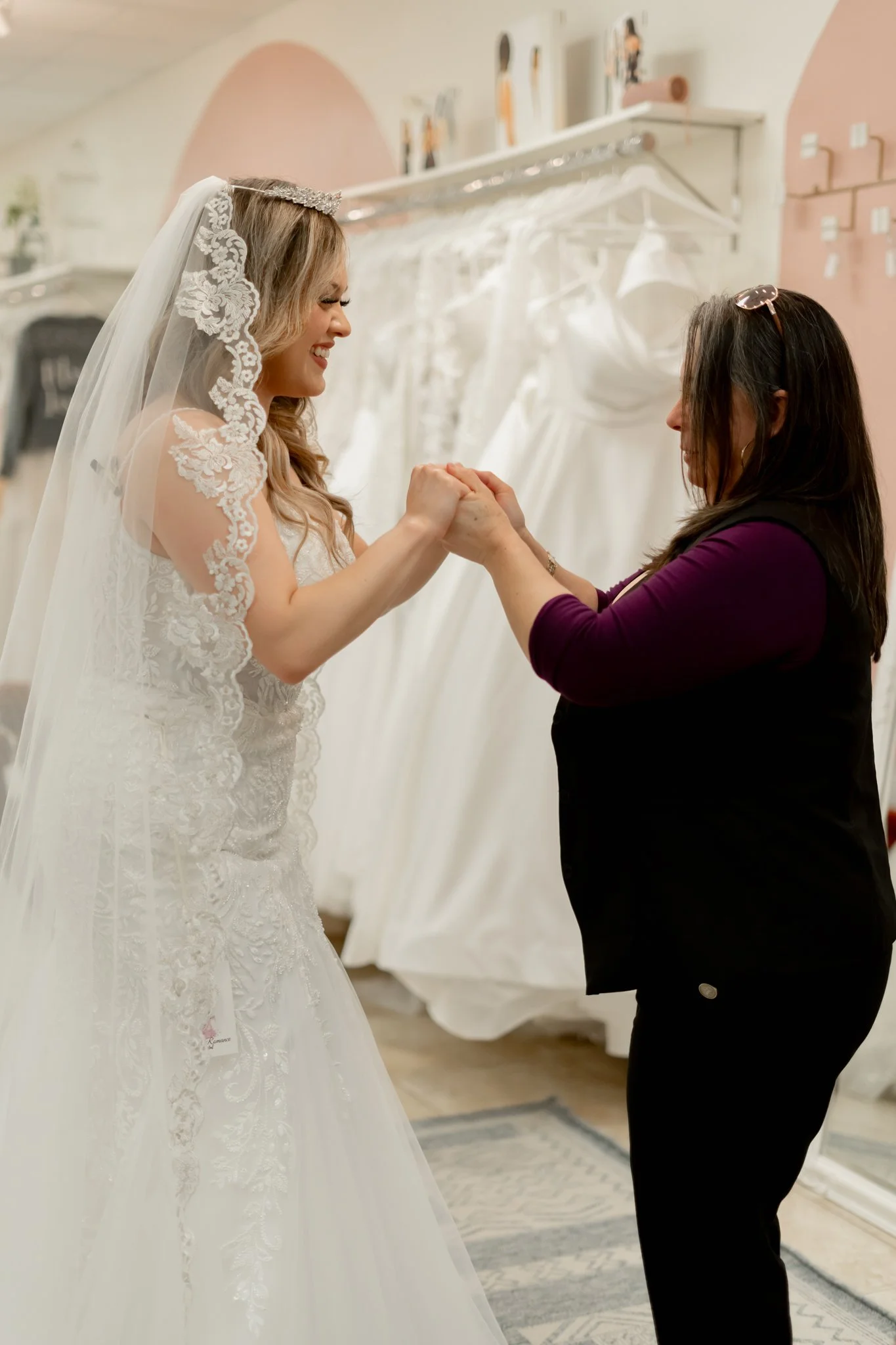The Most Common Wedding Dress Alterations Questions—Answered!






Once you’ve found your dream wedding dress, the next step is ensuring it fits you like a glove. Wedding dress alterations are a crucial part of the process, but they can also be a bit daunting if you’re unfamiliar with what’s involved. To help ease your mind, here are some of the most common questions brides have about wedding dress alterations, along with answers to guide you through this important step.
1. How Many Fittings Will I Need?
Most brides require about two to three fittings to get their dress just right. The first fitting typically focuses on major adjustments like hem length and fit around the bust, waist, and hips. The second fitting fine-tunes these changes and may include tweaks to the straps, neckline, or train. A final fitting ensures everything is perfect and that the dress feels comfortable.
Tip: Schedule your first fitting about six to eight weeks before your wedding day, and plan the final fitting a few weeks before the big day to allow for any last-minute adjustments.
2. When Should I Schedule My First Fitting?
It’s best to schedule your first fitting six to eight weeks before your wedding day. This allows enough time for the tailor to make the necessary alterations and for you to schedule follow-up fittings if needed. If you’re planning to lose weight or tone up before your wedding, communicate this to your tailor, and plan your fittings accordingly.
3. What Should I Bring to My Fittings?
Bring the undergarments, shoes, and accessories you plan to wear on your wedding day to every fitting. These items can affect the fit and length of your dress, so it’s important to have them with you to ensure everything looks cohesive and fits perfectly.
Tip: If you haven’t decided on your final accessories, bring options that are similar in style and size to what you’re considering.
4. How Much Do Alterations Typically Cost?
The cost of alterations can vary widely depending on the complexity of the work needed. On average, brides can expect to spend between $400 and $700 on alterations. Simple alterations like hemming or adjusting the straps might be on the lower end, while more intricate work, like restructuring the bodice or adding embellishments, will increase the cost.
Tip: Ask for an estimate before any work begins so you’re not caught off guard by the final bill. Some bridal boutiques may offer a flat fee for alterations, so be sure to inquire about their pricing structure.
5. Can All Dresses Be Altered?
Most wedding dresses can be altered, but the extent of alterations possible depends on the dress’s construction and fabric. For example, dresses with delicate lace or beading may require more specialized work, which could limit how much they can be altered. It’s also important to note that some alterations, like significantly resizing a dress, might not be feasible without compromising the dress’s structure.
Tip: When purchasing your dress, discuss potential alterations with the boutique or seamstress to understand what’s possible and to avoid any surprises later on.
6. What If I Lose or Gain Weight After the Fittings?
If your weight fluctuates after your fittings, inform your tailor as soon as possible. They can make adjustments to ensure your dress still fits perfectly. However, significant changes in weight might require additional fittings or even more extensive alterations.
Tip: Try to maintain a stable weight once your fittings begin to minimize the need for last-minute alterations.
7. Can I Customize My Dress During Alterations?
Yes! Many brides choose to customize their dresses during alterations. This could include adding sleeves, changing the neckline, adding lace or beading, or even altering the train length. Customizations allow you to make the dress truly your own and reflect your personal style.
Tip: Be clear about your vision and budget when discussing customizations with your tailor. Some changes may be more labor-intensive and costly than others.
8. What If I Don’t Like the Alterations?
If you’re not happy with the way your dress looks after alterations, communicate your concerns immediately to your tailor. It’s essential to voice any issues before the final fitting so there’s still time to make corrections.
Tip: Choose a reputable tailor with experience in bridal alterations to minimize the risk of issues. Don’t hesitate to ask for references or examples of their previous work.
Final Thoughts
Alterations are a key part of making your wedding dress fit perfectly, ensuring you feel confident and beautiful on your big day. By knowing what to expect and asking the right questions, you can navigate the process smoothly and enjoy the excitement of seeing your dream dress come together.
Remember, your wedding dress should not only look amazing but also feel comfortable, allowing you to enjoy every moment of your special day. Happy fitting!
